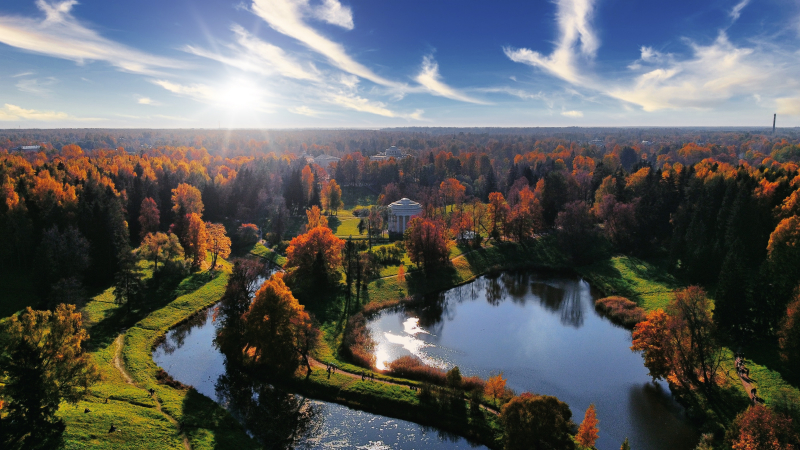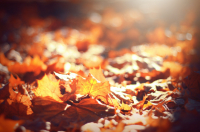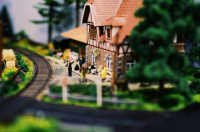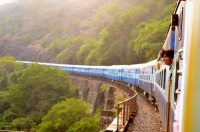A brief history
Founded in 1777, Pavlovsk was devised as a summer residence of Emperor Paul I and his wife Maria Feodorovna, who received the land as a gift from Paul’s mother Catherine the Great. The honor of constructing a palace and a park fell to Charles Cameron, a prominent Scottish architect, though he wasn’t the only one who helped build the architectural character of the town. It had become the work of many outstanding architects, painters, and sculptors who managed to turn it into a real open-air museum and a favorable summer retreat for many prominent people, from the historian Nikolay Karamzin to famed novelist Fyodor Dostoevsky. Years later, Pavlovsk suffered heavily from German occupation during World War II. It took almost 30 years to restore what was damaged; since 1989, the town has been on the UNESCO list of World Heritage Sites.
How to get there
The best way to get to Pavlovsk is by train from the Vitebsky or Kupchino railway stations – 55-57 rubles (50% off for students from September to May).
What to see: from the railway station and throughout the park
-
Pavlovsk railway station
The first place you’ll see as you get to town is a railway station. Although the current building holds much glory in itself, it was constructed only in 1955 to replace the old one, which was destroyed during the war. In fact, the town’s original terminal was located right in the park and was part of the first-ever railway in the Russian Empire. This station wasn’t an ordinary one – designed by Andrei Stackenschneider, it’d grown to be an actual music hall, operating throughout summer, which saw performances by Johann Strauss II, Sergei Prokofiev, and many other well-known musicians. Today, only steam trains, which stop by the station from time to time, remind all passers-by and tourists of the olden days.
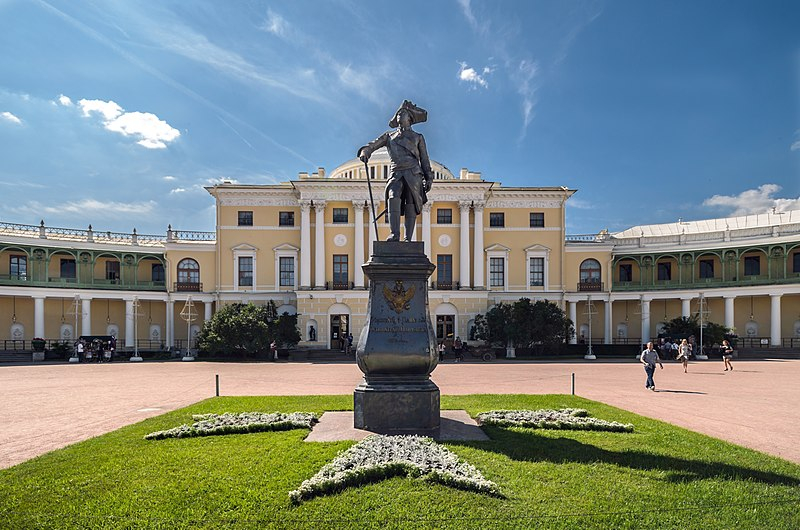
The monument to Paul I in front of the Pavlovsk Palace. Credit: Florstein // CC-BY-SA-4.0 // Wikimedia Commons
-
Pavlovsk Park
No one would argue that the town’s heart lies in its park-and-palace complex. Spread across nearly 600 ha, the Pavlovsk Park is one of the largest parks in Europe and definitely one of the most-visited ones in St. Petersburg. It is especially gorgeous during spring- and summertime, and the golden fall. The park was designed in the best traditions of English gardens and houses a plethora of astonishing pieces of neoclassical architecture.
A bird’s eye view of Pavlovsk Park. Credit: youtube.com
As even a whole new article wouldn’t be enough to cover the entire park inside and out, we’ll name some of the must-visit places: Round Hall, Pil Tower, Twelve Paths, Rose Pavilion, Milkhouse, Temple of Friendship, Visconti Bridge, Centaurs Bridge, Pavlovsk Palace and Private Garden, Three Graces Pavilion, Apollo Colonnade, etc.
The park is a stomping ground for tourists and locals alike. It’s a perfect place to do a whole lot of various seasonal activities, like hiking, jogging, tennis, skiing, or boating – and also see (and even feed!) squirrels, the beloved inhabitants of the park, all year round.
Learn more about tickets and working hours here.
What to see: from the park’s entrances
-
Stein’s Villa
When leaving the park from the central entrance, you might want to walk right under the Nicholas (Cast Iron) Gate, which Nicholas I gifted to the empress on her birthday. This gate, huge and impressive, is an entrance to the town. It’s nearly 11 meters in height and 17 meters in length and weighs around 82 tons. On the other side of the street, you’ll see a playground and a lovely pond, which most locals wouldn’t call anything but Керосинка (from the word “kerosene” – Ed.), and a bit further – a pink modernist mansion that will inevitably catch your eye. Stein’s Villa (dacha) or Miranda Villa was constructed in 1908 for a merchant and throughout the years, after it was sold, the mansion was used for different purposes: since 2011, it's been a child development center.
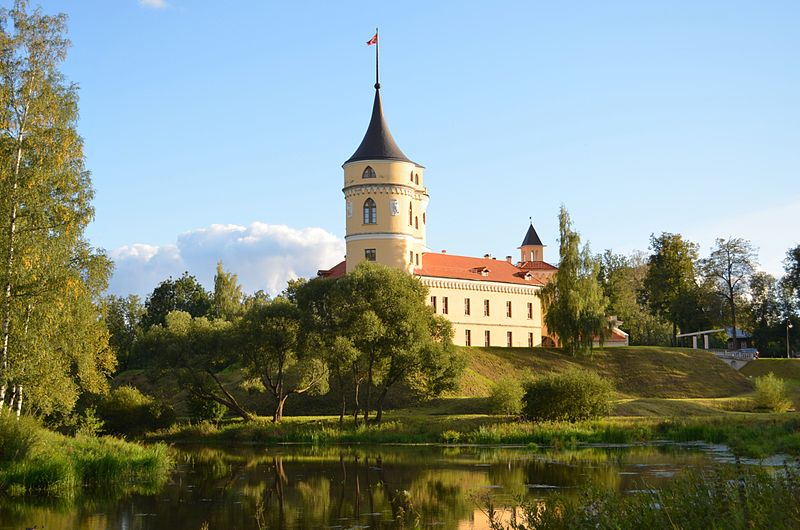
Mariental Fortress. Credit: Reklamade // CC-BY-SA-3.0 // Wikimedia Commons
-
Mariental Park and Fortress
If you choose to walk to the Three Graces Pavilion and leave the park there, you’ll find yourself near a place that’s no less beautiful – Mariental Park, which inherited its name from Maria Feodorovna. This is a free green area where locals love having their picnics, walking their dogs, and basking in the sun in summer. As you stroll through the park, it will take you along the Mariental pond with its gorgeous stone stairs, right to an obelisk and Mariental Fortress, or, most commonly, Bip Fortress. This two-story fairytale castle with two towers was built in the 18th century as an architectural folly of Paul I. Sadly, the fortress was turned into ruins during WWII and remained so till the mid-2000s. In recent times, it underwent a major makeover and became an expensive hotel and a restaurant.
-
Olimpiets stadium
Just opposite the fortress you will find a football stadium that had long been a simple school stadium where school students had their PE classes in late spring and early fall. But in the lead-up to the 2018 FIFA World Cup, it was rebuilt to serve as a training grounds for the teams from Costa Rica.
Where to eat
Once you’ve spent a day exploring the town and enjoying its stunning landscapes and architecture, you’ll be sure to feel hungry. Luckily, there are many places to eat in and out of the park. As a local, I’d recommend going straight to Грушенька or one of the town’s many bakeries, here or here, for a good and rather cheap bite. Yet there are many lovely places in the park, too: for example, various stalls with foods good to eat on the go, the Milkhouse’s cafe, the cafe on the park’s main square, Kugelbecher, and others.
For more ideas on where to go and what to see around St. Petersburg check out our article on the best on-budget getaways from the city.
